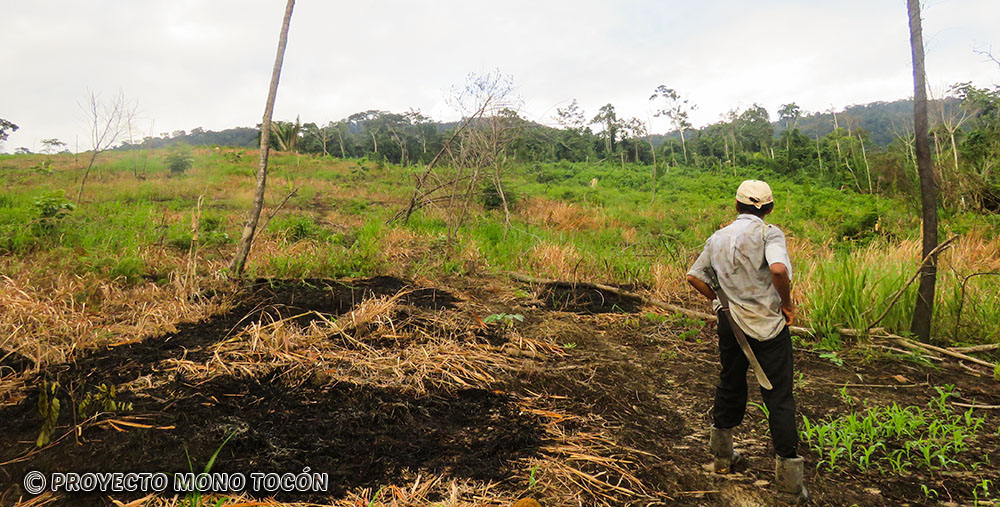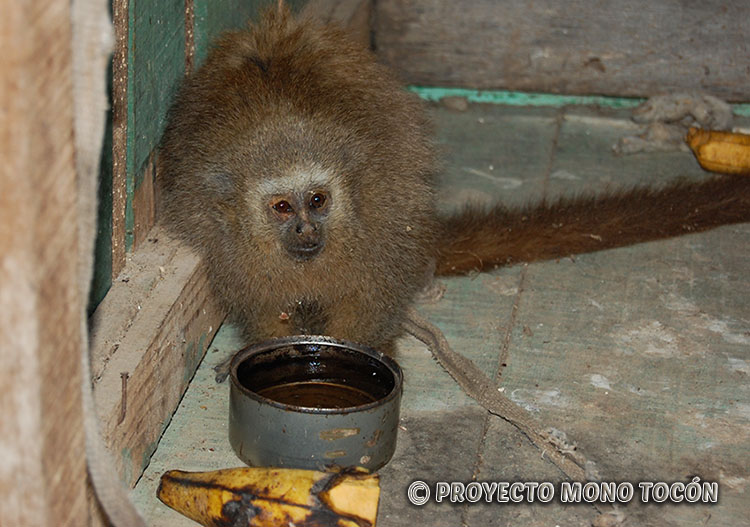The main threat to the future of the San martin titi monkey is habitat loss and fragmentation. The San Martín Region has undergone an intense process of immigration as a result of numerous social development programs focused on the agricultural sector, without taking into account the sustainability of the region. This encouraged deforestation and soil degradation through the cultivation of rice, coffee and cocoa, keeping livestock and the selective extraction of wood.
Deforestation in San Martín was accentuated in the lowland areas, coinciding in this case with the habitat of the San Martin titi monkey. Until 2014 it was the most deforested region of Peru, its high deforestation rate (estimated at 40,000-100,000 Has/year) has caused the loss of approximately 40% of its forest cover. The original habitat has now been reduced to small fragments where genetic exchange between isolated populations is almost impossible, making the species highly vulnerable to extinction.

Another threat to the species is hunting, either for own consumption or the pet trade. The continuous fragmentation of the habitat and the depletion of the macrofauna consumed as bushmeat, has led the (illegal) hunting of species that were usually led hunted, such as the San Martín titi monkey. Although such a small animal is not a common source of food, the lack of larger species and the easy access to the fragmentated habitat has made hunting a threat for the San Martin titi monkey.
